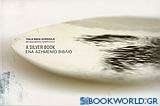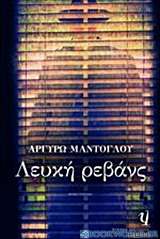A Silver Book
Gazing through the lens of my camera there is always a moment when an object reveals itself to you in its true nature. It is a fragile moment that, if I'm not careful, is over in the blink of an eye.
Such a moment manifested itself while I stared at the silver surface of one Thalia's objects. It was an afternoon when a sudden shift in the clouds summoned a cold wintry light. As the light reflected on the plate's surface it suddenly illuminated with graphic fierceness, what seemed like a minimal skin, revealing a second world within the object. From this moment I began to see and appreciate Thalia's work on another level.
At first glance, Thalia's objects appear iconographic, part of our vocabulary of forms, a plate, a cup, a fork. We feel at home, a warm familiarity, while gazing at their outline. Looking within this form however, an additional narrative begins to communicate with the viewer. A tale of the silver skin.
The skin holds a memory. A precise record of each small gesture and the hand that formed it. A line, a subtle crack or sometimes an ornament opens up the delicate surface and challenges our expectations. These lines communicate both the idea of beauty that lies in imperfection and the concept that the full value of this object is not unveiled until it is integrated into our daily ritual.
When photographing objects the most minimal pieces often contain the most possibilities. They need time to open up to you, but once the layers start to unfold their richness offers an endless depth. Thalia's work represents the very essence of this theory. Her silver pieces seem archetypical at first glance, but over time, each day brings a new light that shifts your view and develops your relationship to the piece, uncovering a new interpretation.
Thus the close-up photographs that enter the second world held within the skin are just as significant as the portrayal of the objects in their totality. They tell a tale about how each piece was brought to life, captured in a code on the surface, giving us the chance to interpret our own story from the object. A personal tale of everyday life and the discovery, even in the smallest detail, of a hidden truth that forces us to re-think what we know.
David Ausloos
| Τίτλος βιβλίου: | A Silver Book |
|---|
| Εκδότης: | Καπόν |
|---|
| Συντελεστές βιβλίου: | Ausloos, David (Φωτογράφος)
Γεωργούλη, Θάλεια - Μαρία (Καλλιτέχνης)
|
|---|
| ISBN: | 9789607037909 | Εξώφυλλο βιβλίου: | Μαλακό |
|---|
| Στοιχεία έκδοσης: | Φεβρουάριος 2008 | Διαστάσεις: | 19x30 |
|---|
| Σημείωση: | Text: Monica Hundal. |
|---|
| Κατηγορίες: | Γενικά Βιβλία > Καλές Τέχνες > Φωτογραφία
Γενικά Βιβλία > Καλές Τέχνες > Κόσμημα |
|---|
Δεν βρέθηκαν στοιχεία για τον συγγραφέα


















